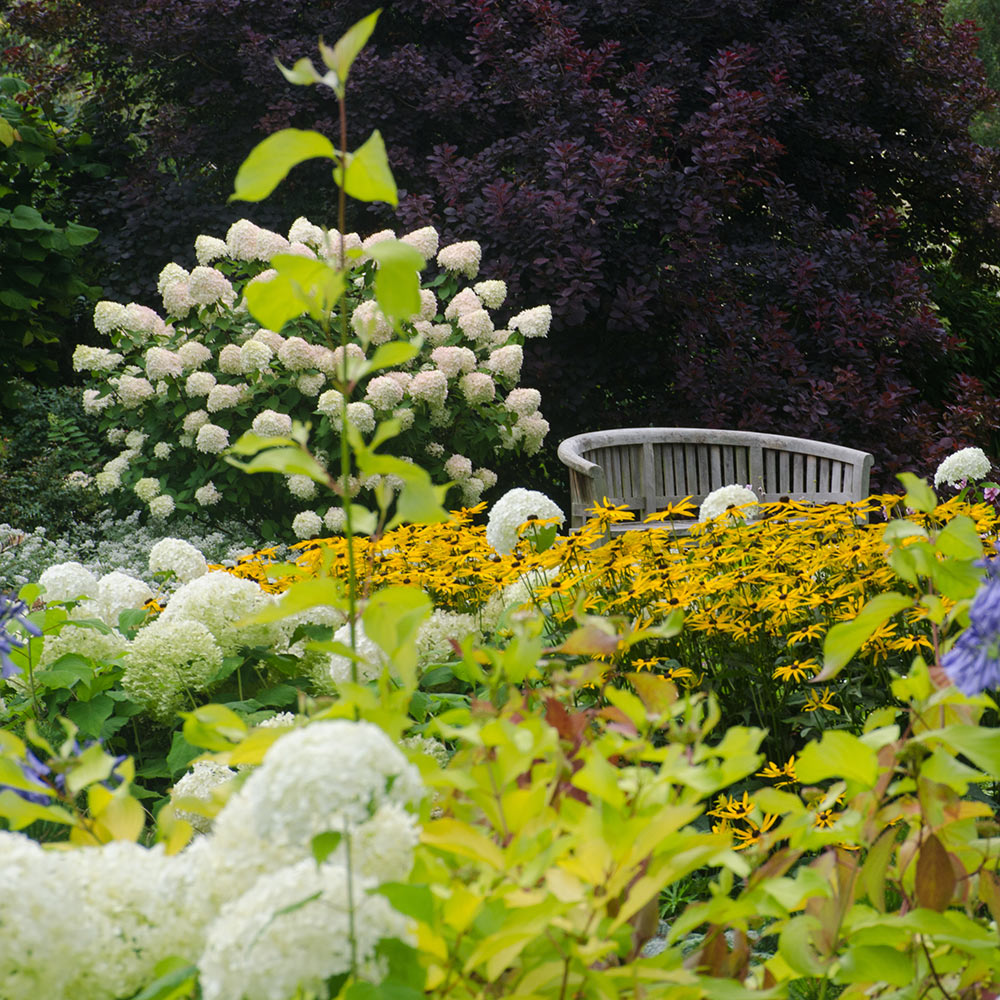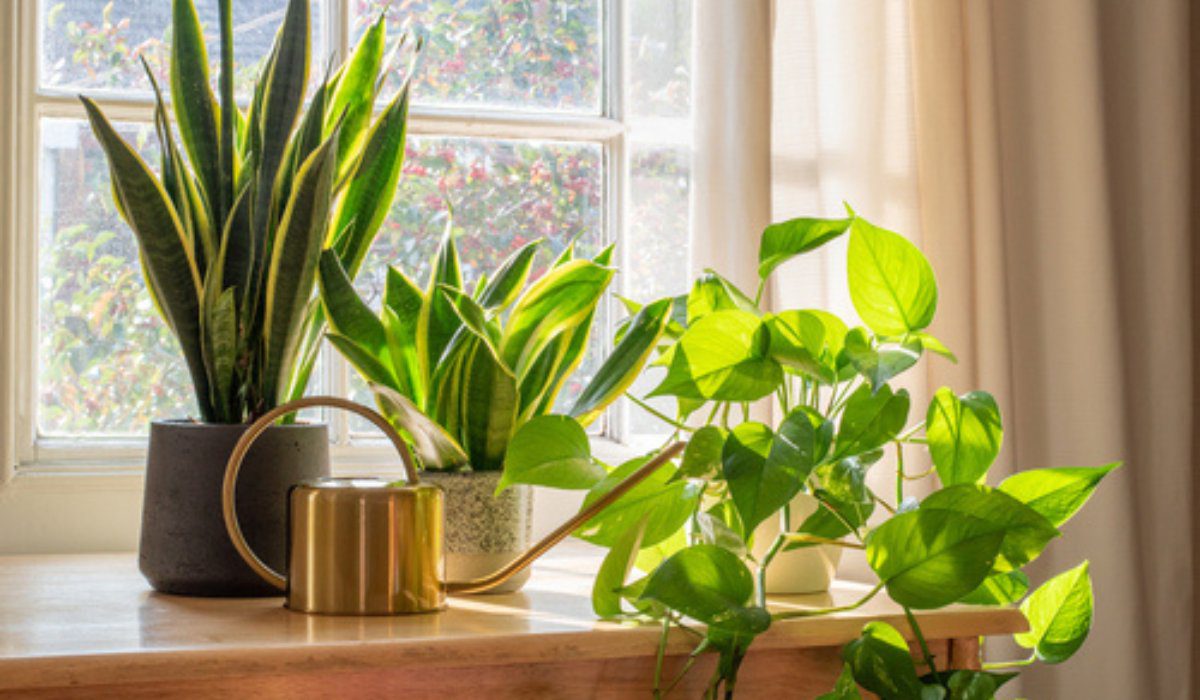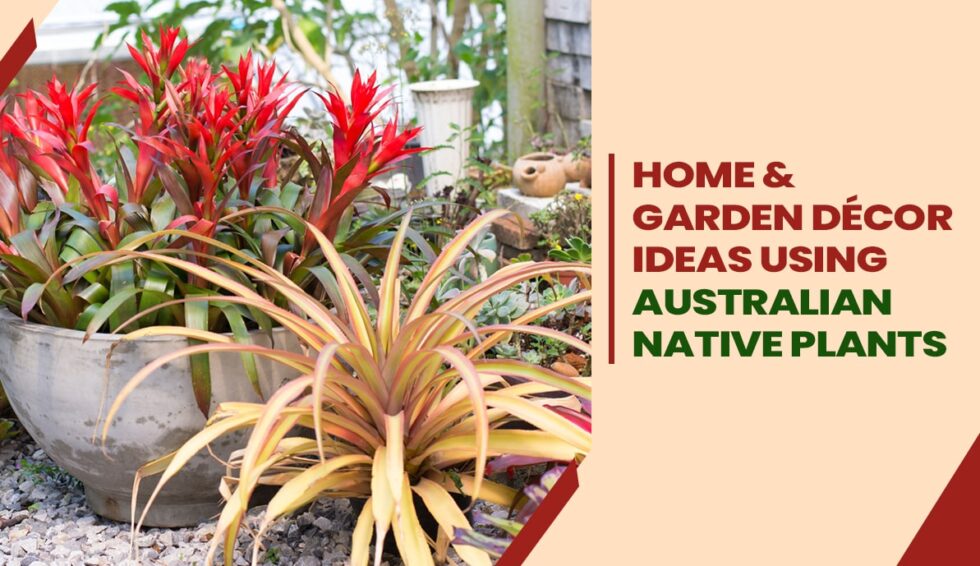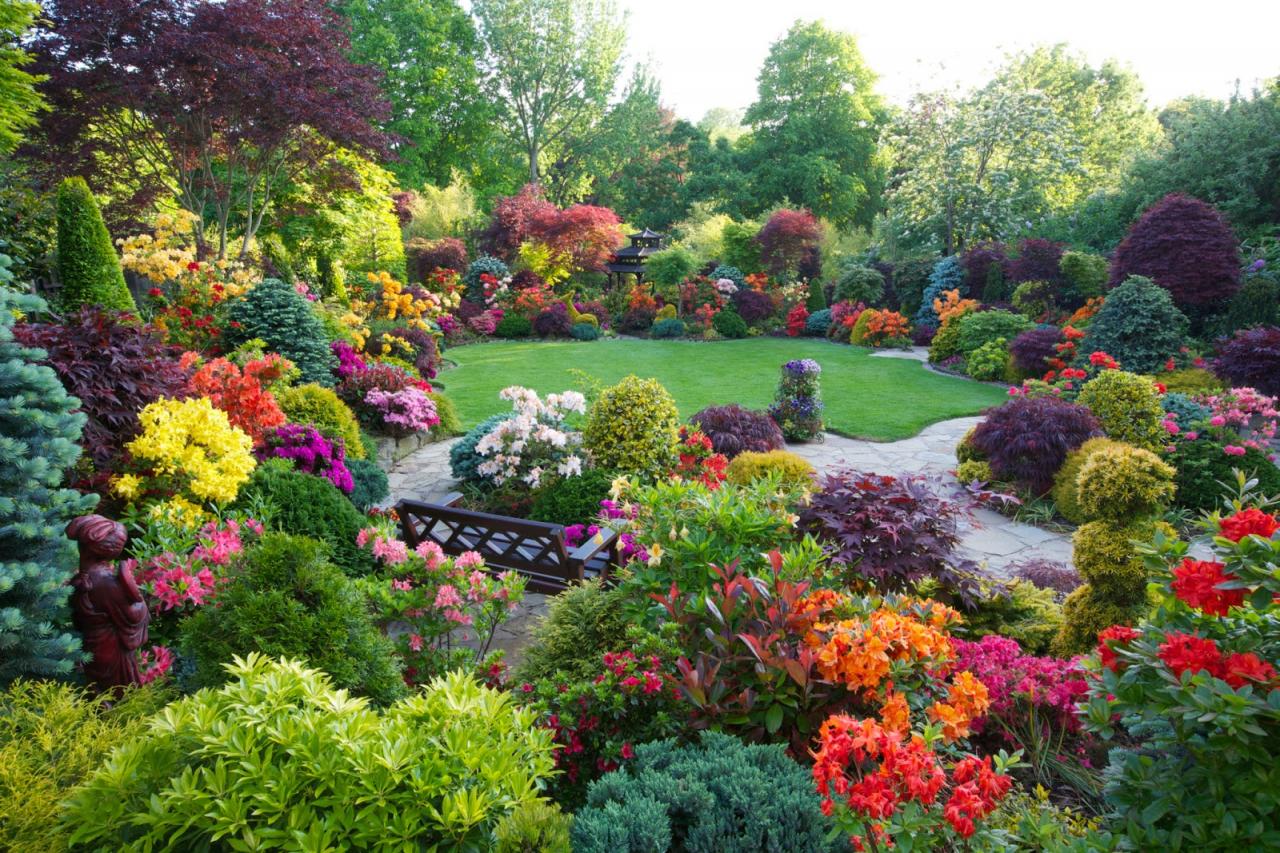Home garden plants offer a rewarding journey, transforming your outdoor space into a vibrant oasis. From selecting the perfect plants for your sun exposure and soil type to mastering planting techniques and pest control, this guide provides a comprehensive overview for both beginners and seasoned gardeners. We’ll explore popular plant choices, essential care tips, and creative design ideas to help you cultivate a thriving home garden bursting with life.
Whether you dream of a bountiful vegetable patch, a fragrant herb garden, or a dazzling display of flowers, we’ll cover everything you need to know. Get ready to dig in and discover the joys of nurturing your own green paradise!
Popular Home Garden Plants
Starting a home garden can feel overwhelming, but with the right plants, it’s a rewarding experience! Choosing plants that suit your skill level and environment is key to success. This guide highlights popular choices for beginner gardeners, focusing on sunlight, water needs, and other essential considerations.
Beginner-Friendly Home Garden Plants
Selecting the right plants is crucial for a thriving home garden, especially for beginners. The following table Artikels ten popular options, considering their sunlight and water requirements, alongside special considerations for optimal growth.
| Plant Name | Sunlight | Water | Special Considerations |
|---|---|---|---|
| Marigolds | Full sun | Moderate | Pest deterrent; deadhead spent blooms for continuous flowering. |
| Zinnias | Full sun | Moderate | Drought-tolerant once established; attracts butterflies. |
| Sunflowers | Full sun | Moderate | Needs ample space; supports can be beneficial for taller varieties. |
| Basil | Full sun | Moderate | Harvest regularly to encourage bushier growth. |
| Lettuce | Partial shade | Consistent moisture | Prefers cool temperatures; harvest outer leaves to prolong the harvest. |
| Spinach | Partial shade | Consistent moisture | Prefers cool temperatures; bolt (go to seed) in hot weather. |
| Tomatoes | Full sun | Regular watering | Needs support (stakes or cages); susceptible to blossom-end rot with inconsistent watering. |
| Beans (bush beans) | Full sun | Moderate | Easy to grow; requires well-drained soil. |
| Peppers | Full sun | Regular watering | Warm weather crops; needs consistent moisture, especially during fruiting. |
| Radishes | Partial shade | Consistent moisture | Fast-growing; harvest when roots are mature. |
Low-Maintenance Shade Plants
Many beautiful plants thrive even in shady areas, minimizing the need for constant attention. These five options are particularly resilient and low-maintenance:
- Hostas: These shade-loving perennials offer attractive foliage in various colors and textures, requiring minimal care once established.
- Astilbe: Known for their feathery plumes of flowers, astilbes prefer moist, shady conditions and require little maintenance.
- Ferns: Many fern varieties thrive in shady, moist environments, adding lush greenery to the garden with minimal effort.
- Bleeding Hearts (Dicentra): These charming plants boast heart-shaped flowers and prefer partial shade and consistently moist soil.
- Impatiens: These vibrant annuals tolerate shade well and provide a splash of color with relatively little care.
Pollinator-Attracting Flowering Plants
Attracting pollinators like bees and butterflies is vital for a healthy garden ecosystem. These three flowering plants are particularly effective:
- Lavender: Its fragrant purple flowers are irresistible to bees and butterflies, and it thrives in full sun and well-drained soil.
- Coneflowers (Echinacea): These daisy-like flowers come in various colors and are a favorite among pollinators. They are drought-tolerant and relatively low-maintenance.
- Bee Balm (Monarda): This plant boasts vibrant flowers that attract hummingbirds and butterflies. It prefers moist soil and partial sun.
Planting and Care Techniques

Nurturing a thriving home garden requires more than just selecting the right plants. Understanding the basics of planting and ongoing care is crucial for a bountiful harvest and a beautiful landscape. This section delves into the practical steps involved in establishing and maintaining your home garden.
Planting Vegetable Seedlings
Proper planting techniques ensure your seedlings establish strong root systems and grow into healthy, productive plants. Follow these steps for optimal results:
- Soil Preparation: Begin by tilling or loosening the soil to a depth of about 12 inches. Remove any weeds, rocks, or debris. Amend the soil with compost or other organic matter to improve drainage, aeration, and nutrient content. A rich, well-draining soil is key to healthy plant growth.
- Digging Planting Holes: Dig holes slightly larger than the root ball of your seedlings. The depth should be such that the top of the root ball is level with the surrounding soil surface. Spacing between holes depends on the mature size of the plant; check the plant label for recommended spacing.
- Planting Seedlings: Gently remove the seedling from its container, taking care not to damage the roots. Place the seedling in the hole, ensuring the roots are spread out naturally. Fill the hole with soil, gently firming it around the base of the plant to eliminate air pockets.
- Watering: Water the newly planted seedlings thoroughly to settle the soil and help them establish. Use a gentle stream of water to avoid dislodging the soil around the plants.
- Mulching (Optional): Applying a layer of mulch around the plants helps retain soil moisture, suppress weeds, and regulate soil temperature. Use organic mulch such as straw, shredded leaves, or wood chips.
Watering Schedule
Consistent watering is essential, but the frequency varies depending on the plant type, weather conditions, and soil type. Overwatering or underwatering can both harm your plants. A flexible approach is necessary.
Creating a thriving home garden requires more than just green thumbs; efficient watering is key! That’s where understanding the basics of home-garden home-improvement plumbing comes in, ensuring your plants receive the right amount of water at the right time. From drip irrigation to well-placed hoses, proper plumbing is crucial for healthy, flourishing home garden plants.
A sample schedule could be:
- Vegetables (e.g., tomatoes, lettuce): Water deeply and regularly, especially during dry spells. Aim for consistent moisture in the soil, but avoid waterlogging.
- Herbs (e.g., basil, rosemary): Herbs generally prefer well-drained soil and can tolerate slightly drier conditions. Water when the top inch of soil feels dry.
- Flowering Plants (e.g., roses, petunias): Watering requirements vary greatly among flowering plants. Check the individual plant’s needs, but generally, aim for consistent moisture without overwatering.
Remember to adjust watering based on rainfall and weather. During hot, sunny days, you may need to water more frequently. During cooler, cloudy periods, you may need to water less.
Soil Fertilization
Healthy soil provides the essential nutrients for plant growth. Regular fertilization replenishes these nutrients, ensuring vigorous growth and abundant yields. Both organic and inorganic fertilizers are effective, each with its own advantages and disadvantages.
Examples of fertilizers:
- Organic Fertilizers: Compost, manure, worm castings. These release nutrients slowly and improve soil structure. Application involves incorporating them into the soil before planting or as a top dressing.
- Inorganic Fertilizers: These are commercially produced and contain specific nutrient ratios (e.g., NPK – Nitrogen, Phosphorus, Potassium). They provide a quick release of nutrients but can potentially harm the environment if overused. Follow package instructions carefully for application rates.
Always follow the instructions on the fertilizer packaging for proper application rates. Over-fertilizing can damage plants, while under-fertilizing can lead to poor growth.
Pest and Disease Management

Maintaining a thriving home garden requires vigilance against pests and diseases. Early detection and appropriate management strategies are crucial for preventing significant damage and ensuring a bountiful harvest. Ignoring these issues can lead to significant crop loss and potentially impact the health of surrounding plants. This section details common garden pests, their impact, control methods, and preventative measures for diseases.
Common Garden Pests and Their Control
Understanding the characteristics of common garden pests is the first step towards effective control. Identifying the pest allows for targeted treatment, minimizing the use of broad-spectrum pesticides and protecting beneficial insects. The following table summarizes five common pests and their management.
Cultivating a thriving home garden offers a sense of tranquility, a personal oasis. Imagine extending that feeling of calm to the ultimate level of luxury, by staying at one of the most exclusive luxury hotels globally with private villas and pools , where meticulously landscaped gardens often complement the stunning private pools. Returning home, inspired by these luxurious escapes, you can then appreciate your own home garden even more.
| Pest Name | Description | Damage | Control Methods |
|---|---|---|---|
| Aphids | Small, soft-bodied insects, often green, black, or brown, that cluster on stems and leaves. | Suck plant sap, causing stunted growth, leaf curling, and honeydew secretion (leading to sooty mold). | Strong water spray, insecticidal soap, introducing ladybugs (natural predator). |
| Spider Mites | Microscopic arachnids that spin fine webs on leaves. | Cause stippling and yellowing of leaves, eventually leading to leaf drop. | Regular misting, insecticidal soap, miticides (use cautiously). |
| Whiteflies | Small, white, winged insects that congregate on the undersides of leaves. | Similar to aphids, they suck sap, causing yellowing and wilting, and also secrete honeydew. | Yellow sticky traps, insecticidal soap, neem oil. |
| Slugs and Snails | Mollusks that leave silvery trails. | Chew holes in leaves and stems, causing significant damage to seedlings and young plants. | Handpicking, beer traps, diatomaceous earth, slug pellets (use cautiously). |
| Cabbage White Butterflies | White butterflies with black spots on their wings. | Their caterpillars (larvae) devour leaves, leaving holes and skeletonized foliage, particularly on brassicas. | Handpicking caterpillars, row covers, Bacillus thuringiensis (Bt) – a bacterial insecticide targeting caterpillars. |
Preventative Measures for Plant Diseases
Preventing plant diseases is far more effective than treating them. Proactive measures significantly reduce the risk of infection and the need for chemical intervention. These measures focus on maintaining a healthy growing environment and choosing disease-resistant varieties.Proper sanitation is paramount. This includes removing and disposing of infected plant material promptly, avoiding overhead watering to prevent fungal spore spread, and regularly cleaning garden tools.
Choosing disease-resistant plant varieties tailored to your local climate further minimizes the risk of common diseases. Rotating crops yearly helps to break the disease cycle in the soil.
Natural Predators vs. Chemical Pesticides
Two primary approaches to pest control are using natural predators and employing chemical pesticides. Each has its advantages and disadvantages.Using natural predators, such as ladybugs for aphids or praying mantises for various insects, provides a sustainable and environmentally friendly approach. It promotes biodiversity and avoids the harmful effects of chemicals on beneficial insects and the environment. However, it requires more time and patience, and may not be effective against all pests.
The effectiveness also depends on establishing a suitable habitat for these predators.Chemical pesticides offer a quick and often effective solution to pest infestations. They can provide immediate control, especially in severe outbreaks. However, they can harm beneficial insects, pollute the environment, and potentially leave residues on harvested crops. Improper use can also lead to pest resistance, making them less effective over time.
For example, overuse of broad-spectrum insecticides can eliminate beneficial pollinators like bees, impacting overall garden productivity. Therefore, chemical pesticides should be used as a last resort, following label instructions carefully.
Home Garden Design and Layout: Home Garden Plants

Designing a home garden, even a small one, involves careful planning to maximize space and aesthetic appeal. Consider sunlight exposure, plant sizes, and your personal style to create a thriving and visually pleasing outdoor space. Effective planning ensures your plants receive optimal conditions and your garden looks its best.
A well-designed home garden is both functional and beautiful, offering a relaxing space and fresh produce. Understanding basic design principles and incorporating vertical gardening techniques can transform even the smallest area into a productive and attractive oasis.
Sample Small Home Garden Layout, Home garden plants
Imagine a 10ft x 5ft rectangular garden bed. The longest side faces south to maximize sunlight exposure. In the back (north-facing) row, plant taller sun-tolerant plants like tomatoes (2-3ft tall) spaced 2 feet apart. In the middle row, place medium-height herbs such as basil and rosemary (1-1.5ft tall), planted 1 foot apart. These plants benefit from some shade from the taller tomatoes in the afternoon.
Finally, in the front row, plant low-growing lettuce and spinach (6-8 inches tall) spaced 6 inches apart. This arrangement allows sufficient sunlight to reach all plants while preventing taller plants from shading the shorter ones. A small pathway (1ft wide) can run along the front of the bed for easy access.
Five Design Principles for Aesthetically Pleasing and Functional Home Gardens
Creating a beautiful and functional garden involves thoughtful consideration of several key design elements. These principles help ensure your garden is both visually appealing and practical.
Below are five crucial design principles to guide your garden creation:
- Balance: Achieve visual balance by distributing plants and features evenly across the garden. This can be symmetrical (mirror image) or asymmetrical (different elements balanced visually). For instance, a large plant on one side could be balanced by a cluster of smaller plants on the other.
- Scale and Proportion: Choose plants and garden features that are appropriately sized for the space. Overly large plants can overwhelm a small garden, while tiny plants can get lost in a larger area. Consider the relative sizes of plants and hardscape elements.
- Unity and Harmony: Create a cohesive look by using a consistent color palette, plant types, and materials. For example, sticking to warm colors or using similar textures will unify the garden’s appearance.
- Emphasis: Create a focal point to draw the eye. This could be a unique plant, a water feature, a piece of garden art, or a strategically placed seating area. This element anchors the overall design.
- Rhythm and Repetition: Use repetition of colors, textures, or plant types to create a sense of rhythm and visual interest. Repeating a particular flower type throughout the garden, for example, can create a pleasing visual flow.
Incorporating Vertical Gardening Techniques into Small Home Gardens
Vertical gardening is a space-saving solution that maximizes yields in limited areas. It involves growing plants upwards, using various structures to support them. This allows you to grow more plants in the same footprint, making it perfect for small home gardens.
Several methods and materials can be employed for vertical gardening:
- Trellises: These can be made from various materials, including wood, metal, or even repurposed items like bamboo. Trellises provide support for climbing plants like beans, cucumbers, and peas.
- Hanging Baskets: These are excellent for growing trailing plants like strawberries or herbs. They can be hung from fences, walls, or even tree branches.
- Vertical Planters: These can be made from various materials like wood, plastic, or recycled containers. They can be stacked or arranged to create a wall of plants.
- Wall-mounted Planters: These are specifically designed to be attached to walls, maximizing vertical space. They are available in various sizes and materials.
- Living Walls: These are more complex systems that involve planting directly into a wall structure or using specialized panels. They offer a striking visual effect but require more planning and potentially more investment.
Harvesting and Preservation

Bringing the bounty of your home garden to the table is incredibly rewarding! Knowing when and how to harvest your produce, and then preserving it for later enjoyment, is key to maximizing your gardening efforts. This section will guide you through the process, from picking the perfect tomato to storing your herbs for winter use.
Optimal Harvesting Times and Storage Techniques for Various Vegetables and Herbs
The timing of your harvest significantly impacts the flavor and quality of your homegrown produce. Harvesting too early results in underripe and less flavorful vegetables, while harvesting too late can lead to tough, bitter, or even spoiled produce. Proper storage techniques extend the shelf life of your harvest, allowing you to enjoy the fruits (and vegetables!) of your labor for longer.
- Tomatoes: Harvest when fully colored and slightly soft to the touch. Store at room temperature for a few days, then refrigerate for longer storage. Avoid refrigerating green tomatoes, as this can inhibit ripening.
- Cucumbers: Harvest when they reach the desired size and are firm. Store in the refrigerator in a plastic bag to maintain crispness.
- Lettuce: Harvest outer leaves as needed, leaving the inner leaves to continue growing. Store in a plastic bag in the refrigerator.
- Basil: Harvest leaves regularly by pinching off the top sets of leaves. This encourages bushier growth. Store in a glass of water or in a plastic bag in the refrigerator.
- Beans (green beans): Harvest when the pods are young, tender, and bright green. Snap off the pods at the stem. Store in a plastic bag in the refrigerator.
- Carrots: Harvest when the roots are fully grown and the tops are still green. Store in a cool, dark, and humid place, such as a root cellar or refrigerator crisper drawer.
Preservation Methods for Homegrown Produce
Preserving your harvest allows you to enjoy the flavors of summer long after the growing season ends. Here are three popular methods:
Canning
Canning involves preserving food by heating it to a high temperature and sealing it in airtight jars. This process kills harmful bacteria and enzymes, preventing spoilage. Proper canning requires careful attention to detail, including using sterilized jars and following precise processing times based on the type of food being canned. For example, low-acid foods like green beans require longer processing times under pressure to ensure safety.
Improper canning can lead to foodborne illness.
Freezing
Freezing is a simple and effective method for preserving many types of produce. Blanching vegetables (briefly boiling them in water) before freezing helps to retain their color, texture, and nutritional value. Fruits can be frozen whole, sliced, or pureed. Properly frozen produce can last for several months, if stored at 0°F (-18°C) or below.
Drying
Drying removes moisture from produce, inhibiting the growth of microorganisms and extending shelf life. This can be done naturally by air drying or using a food dehydrator. Dried herbs can be stored in airtight containers for several months, while dried fruits and vegetables may require longer-term storage in airtight containers in a cool, dry place. Examples include drying tomatoes for sun-dried tomato paste or drying herbs for use in cooking throughout the year.
Benefits of Homegrown Produce
Homegrown produce offers several advantages over store-bought options:
- Superior Flavor and Freshness: Produce picked at its peak ripeness tastes far superior to store-bought produce that may have traveled long distances and been harvested before fully ripe.
- Reduced Pesticide Exposure: You have complete control over the growing process, allowing you to avoid pesticides and other harmful chemicals.
- Nutritional Value: Homegrown produce is often more nutrient-rich than store-bought options, as it hasn’t been stored for extended periods.